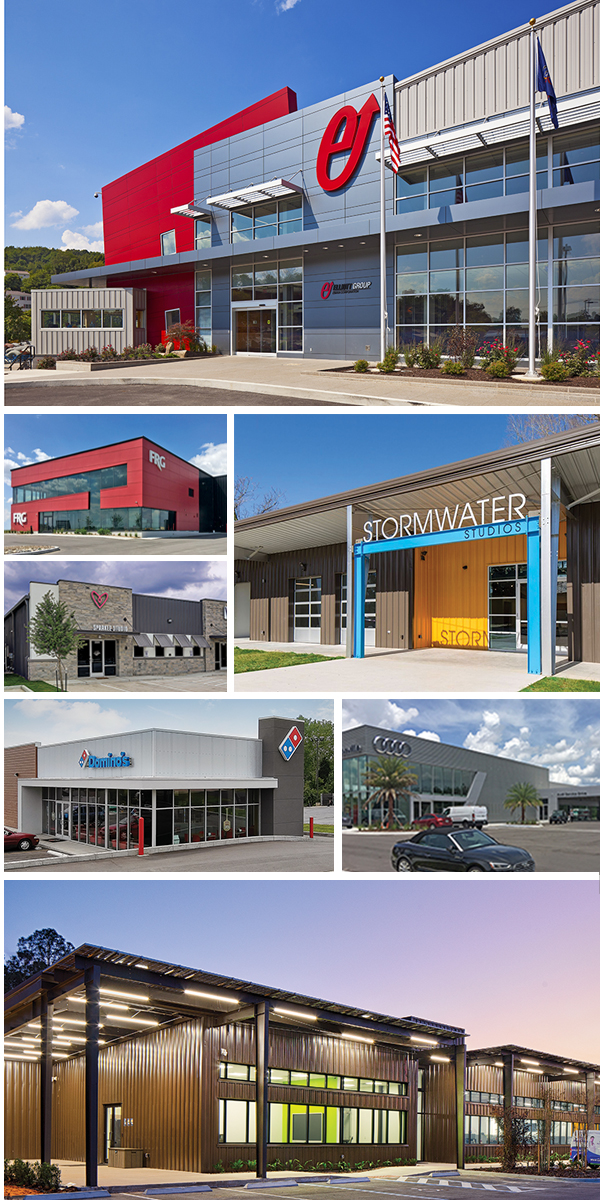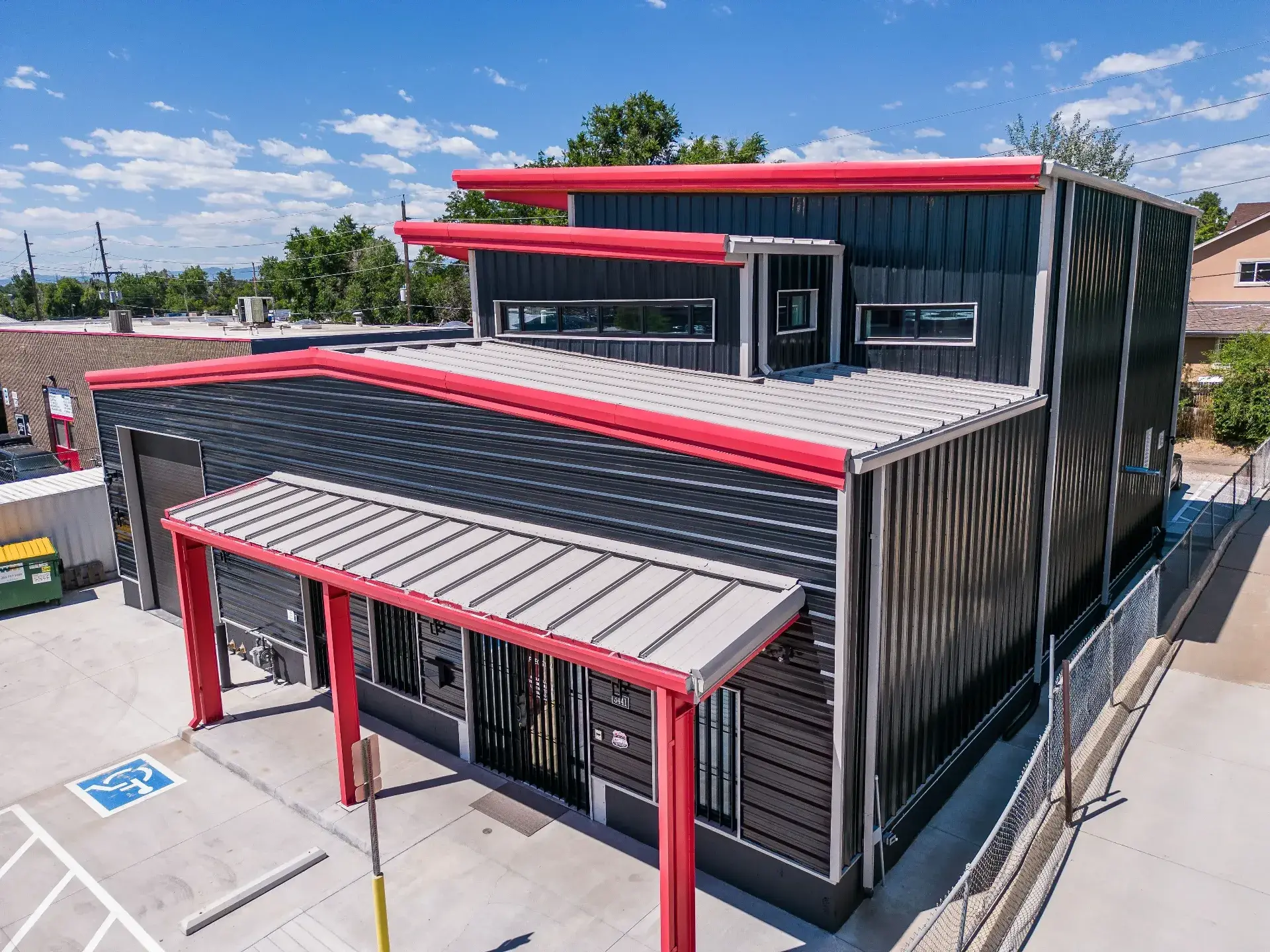The Affordable Advantage of Steel Buildings: Why Select This Superior Option
Steel structures have become an engaging selection in the realm of building for a multitude of factors. From their durable longevity to cost-effectiveness and sustainable features, steel structures use a series of benefits that establish them apart in the industry. The affordable edge that steel buildings hold extends much beyond their first charm, making them a preferred alternative for those seeking durability and adaptability in their building and construction tasks. As we check out the world of steel building and constructions, it ends up being noticeable why this superior alternative has actually amassed significant interest from designers, designers, and architects alike.
Durability and Longevity
In the realm of longevity, building and construction and durability are fundamental elements that highlight the worth recommendation of steel buildings. Steel is renowned for its toughness and capacity to endure numerous ecological conditions, making it a suitable selection for lasting structures. Unlike typical products like timber or concrete, steel does not warp, crack, or rot gradually, making sure that a steel structure remains structurally sound for years.
One crucial factor contributing to the toughness of steel buildings is their resistance to bugs such as termites, which can trigger substantial damages to wooden structures. Steel is also non-combustible, minimizing the danger of fire damage and increasing the security of inhabitants. Additionally, steel structures require very little upkeep contrasted to various other construction products, saving both time and cash over time.
Moreover, improvements in steel manufacturing innovation have actually additionally enhanced the longevity of steel structures by improving rust resistance and architectural honesty. With appropriate treatment and maintenance, a well-constructed steel building can last well over half a century, supplying a durable and reliable service for numerous construction requirements.
Cost-Effectiveness
With its many economic advantages, steel as a structure material supplies a compelling affordable service for different building projects. The cost-effectiveness of steel structures comes from several key aspects. Firstly, the preliminary cost of steel may be greater than some typical products, however the long-lasting cost savings are substantial. Steel structures call for minimal upkeep, minimizing fixing and replacement costs over time. Additionally, steel is extremely durable, which translates to decrease insurance coverage costs as a result of lowered risk of damage from elements such as fire, parasites, and natural catastrophes.
Steel structures are also energy-efficient, enabling for financial savings on home heating and air conditioning expenditures - steel buildings. On the whole, the cost-effectiveness of steel structures makes them a wise investment for numerous building demands.
Versatility in Layout
The flexibility of steel as a building material permits for a wide array of cutting-edge layout opportunities in building projects. Steel structures supply unrivaled flexibility in style, making them a favored choice for building contractors and architects. One of the vital benefits of steel is its strength-to-weight ratio, which enables the building and construction of big, open rooms without the need for too much support columns. This structural performance enables creative and modern-day designs that might not be feasible with other building materials.
Steel's flexibility likewise permits modification Going Here to fulfill certain style needs. Whether it's bent roofs, intricate exteriors, or special geometric forms, steel can be formed to bring basically any kind of layout principle to life. Furthermore, steel structures can be conveniently expanded or customized, supplying future adaptability for adapting to changing requirements.
Additionally, the use of steel in building enables sustainable layout techniques. Steel is highly recyclable, lowering ecological influence and advertising green building and construction. Its toughness and resistance to deterioration ensure check that steel buildings preserve their aesthetic charm and structural integrity for years ahead. Ultimately, the versatility of steel in design not just improves the aesthetic allure of structures but likewise adds to their long life and capability.

Lasting Building Practices
Structure upon the foundation of flexibility in design, lasting construction methods in steel buildings play a vital function in mitigating environmental influence and advertising lasting green remedies. Steel is a highly sustainable product due to its recyclability and toughness. When steel buildings get to completion of their lifecycle, you can try here the steel elements can be recycled and used in brand-new building jobs, lowering the need for basic materials and minimizing waste. Additionally, the power effectiveness of steel structures adds to sustainability efforts. Steel frameworks can easily suit insulation, photovoltaic panels, and various other energy-efficient functions, decreasing energy intake and functional costs over time. This not just profits the setting yet likewise supplies long-term price savings for building proprietors.

Quick Construction Timeline

Furthermore, the structured process of erecting steel structures lowers building time considerably. The simplicity of steel building design and the ease of assembly add to faster job conclusion, making it a suitable choice for customers with time-sensitive demands (steel buildings). Furthermore, the capability to function on different components simultaneously, such as site prep work and foundation building alongside steel manufacture, further accelerates the general building and construction timeline
Verdict
In conclusion, steel buildings provide a competitive benefit as a result of their sturdiness, cost-effectiveness, versatility in style, lasting building methods, and rapid construction timeline. These elements make steel buildings a remarkable choice for numerous construction tasks, supplying long-lasting advantages and worth. Choosing steel structures can result in enhanced performance, effectiveness, and sustainability in the building market.
Unlike standard materials like wood or concrete, steel does not warp, crack, or rot over time, making certain that a steel structure remains structurally audio for decades.
The flexibility of steel as a building product permits for a wide variety of ingenious layout opportunities in construction jobs.Building upon the foundation of flexibility in layout, lasting construction practices in steel structures play an essential role in mitigating environmental impact and promoting long-term eco-friendly solutions. When steel buildings get to the end of their lifecycle, the steel elements can be reused and made use of in new construction tasks, decreasing the need for raw products and minimizing waste.In verdict, steel buildings offer a competitive benefit due to their durability, cost-effectiveness, adaptability in layout, lasting building and construction practices, and rapid construction timeline.